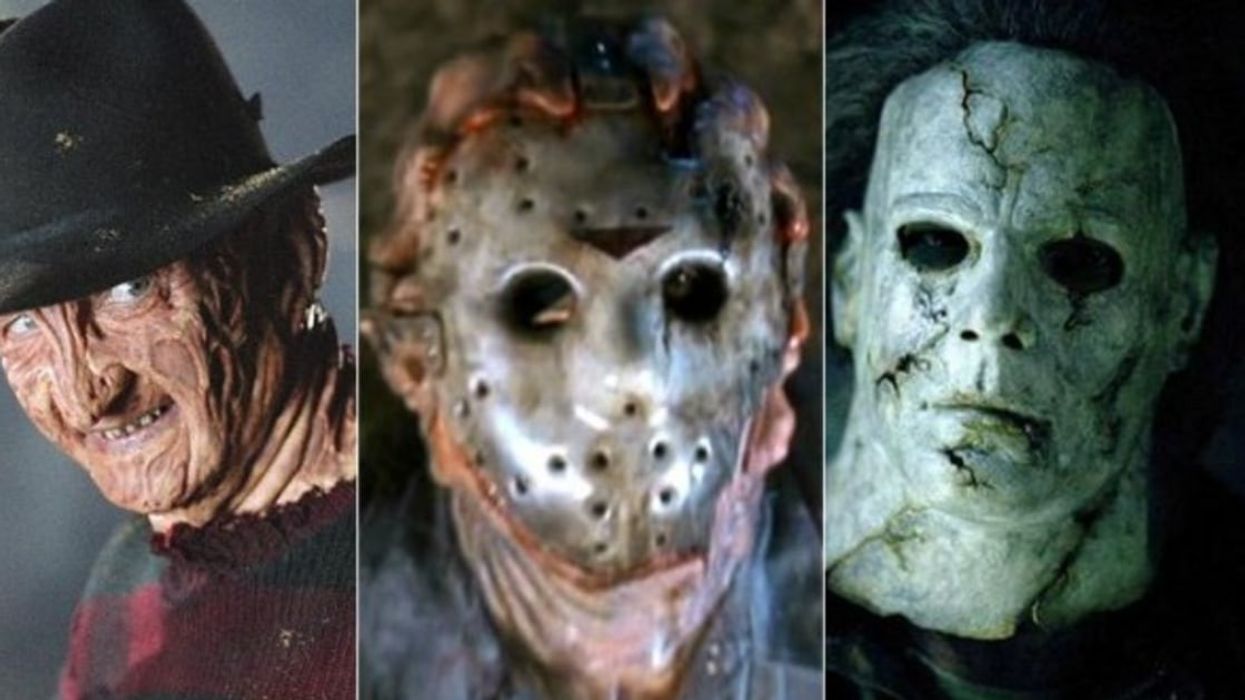Watch: 5 Modern Horror Staples Established by Classic Slasher Flicks
It's officially Shocktober, and time to revisit where horror's most terrifying tropes were birthed (in hell!)

As the night of All Hallow's Eve draws nigh, overpriced candy vanishes from discount store shelves and undead minds inevitably wander to all things sinister and unnerving, and I am sometimes unable to stop badly mimicking the syntax of Vincent Price, which is kind of a hassle. In just the nick of time, this video from Before The Credits, reveals the origins of some of the most bloodcurdling horror tropes—and how they became clichés. Check it out and read our takeaways below.
This video has an interesting thesis, being the idea that the original, canonical trio of Halloween horror flicks—A Nightmare on Elm Street, Halloween, and Friday the 13th—couldn't possibly be cliché. After all, goes the argument, they established the tradition. We don't call the Beatles cliché because every band that followed was influenced by them, to one degree or another. They are the original. Okay, fair enough.
You might notice that one film is left off the list, and that's Tobe Hooper's 16mm classic The Texas Chainsaw Massacre, but, to paraphrase John, the video's host, that film didn't have the impact on clichés in horror films that say, Halloween did. So what are the tropes—that then horribly mutated into clichés—that are associated with these three films? Here's just a few:
1. Knives, Not Guns
To wit: Michael's butcher knife, Jason's machete, and Freddy's glove.
2. Masked Killers
Fun fact: Michael Meyer's mask is actually a James T. Kirk (yes, William Shatner) mask that was painted a ghoulish white, while Jason's hockey mask was molded from a Detroit Red Wings goalie mask. Incidentally, Jason wore a sack mask in the second movie, which is a good place to look for the start of this terrifying mask variation (though Stereogum places its origin a year earlier, in the film Dark Night of the Scarecrow, which we all know and love.) Freddy's burned face, while not technically a mask, counts for the purposes of this exercise.
3. Completely Useless Authorities
Indeed, law enforcement and other authority type figures in these films never seem to have a whole lot of faith in the word of the victims, or soon-to-be victims, of these marauding killing machines, preferring to scoff at their screams, which usually leads to their getting picked off during some momentary idyll.
4. Evil Never Dies
While philosophers and theologians have debated the problem of theodicy for millennia, and the presence of evil in the world is a hotly debated topic, even unto today, in these films, the answer is far more certain. Evil. Never. Dies. Straight up gonna live forever. Deal with it.
5. Death by the Sex
One of the oldest, and most psychologically fraught, elements of horror films, present in all of these to one degree or another, is the idea that giving into temptation is the surest route to dispatch by some prudish psycho. This is rooted in traditions so old that the filmmakers themselves just picked the idea up and ran with it. Basically, it's way to get more violence on-screen while attempting to frighten amorous teens.
What horror tropes can you not get enough of? Let us know in the comments.
Source: Behind The Credits

 Ilari HeiniläCredit: Altti Heinilä
Ilari HeiniläCredit: Altti Heinilä









